What and Why?
In today’s fast-paced life, everyone is running towards accomplishing some goals and has no time to wait for anything. A few decades ago, people used pen or pencil for simple mathematical calculations; then moved to electronic calculates; now heavily use iPhone and other electronic devices. So, people are more and more leaning towards readymade or pre-built solutions that would solve their problems. Likewise, now days, corporations are moving towards pre-built solutions or software; so, they don’t need to invest in developing a new solution or re-inventing the wheel. One among those software or package is the Enterprise Resource Planning tool: SAP (System, Applications, and Products).
Advantages:
a) SAP has predefined functionalities embedded as modules to solve the evolving business needs.
b) SAP provides solutions for the areas of Finance, Production, HR Management, and etc.
c) While SAP has rich modules enough to meet organizations’ business requirements, it also has the flexibility to adopt our new innovative ideas in the form of new modules and customized reports.
SAP Modules:
To meet the organizational goals, SAP has SAP B1 and SAP R2. In this article we will focus on SAP B1 related.
Each SAP B1 module has many files that handle the flow of certain functions of the organization.
For example, “Production Module” covers the flow of
- Bill of Material
- Production Order
- Material Indent
- Material Issue
- Process Plan
- Work in Progress, and so on.
Before we jump into the Modules, it is better to understand the flow of SAP in a typical organization. The following picture explains some of these areas:
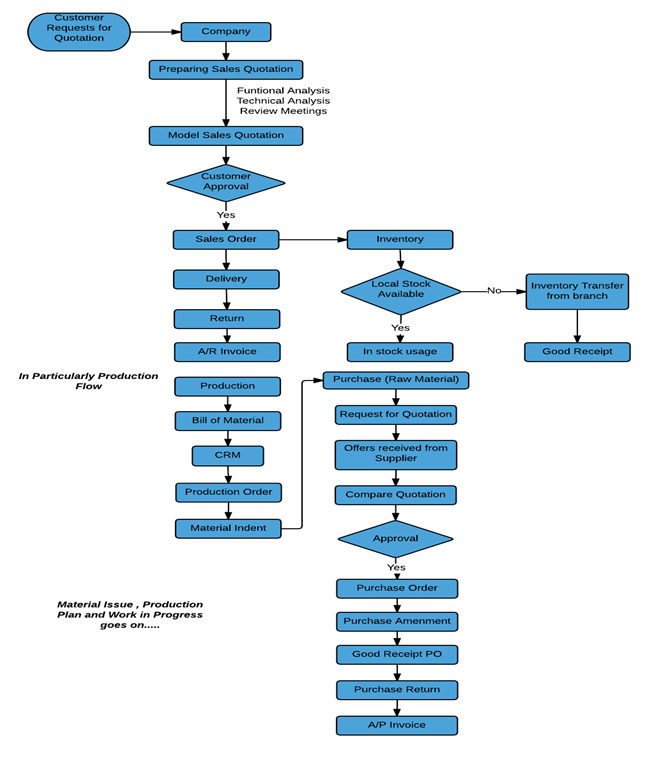
Modules List on Welcome Screen
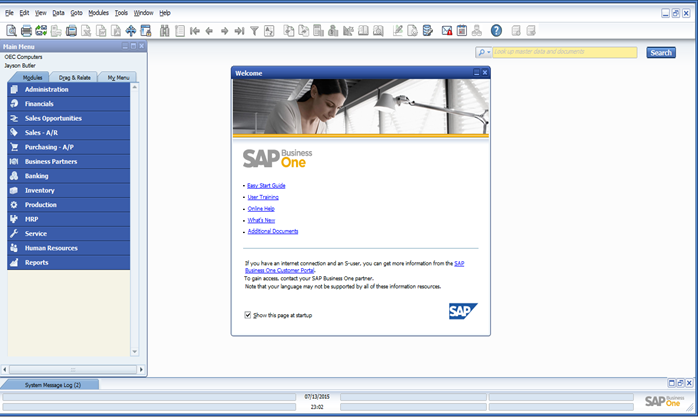
Particularly, the “Sales Quotation” is under the module of Sales- A/R, and it has the structure as follows:
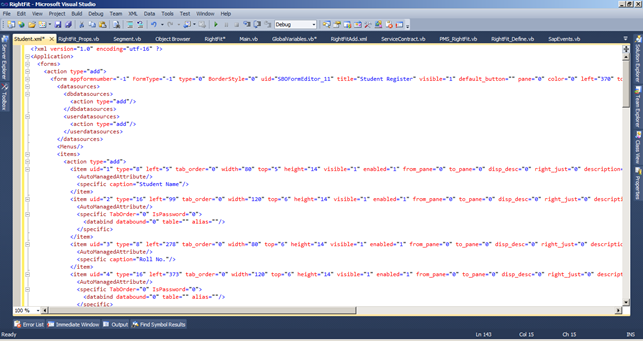
Here, we create a Quote for a customer with the line items, quantity and price. After Functional, Technical Discussions and Review Meetings, this quotation is confirmed and sent to the customer.
Likewise, other modules like Finance, Production and Purchase also look pretty as well as cover all necessary business aspects of any organization.
SAP Reports
To see the purchase details or Sales achievement or items in stock and etc., we need an instant and dynamic report. There are lot of in-built report functionalities available in SAP and also we can generate our own reports like inventory report.
Sales Analysis Report can be generated as below.
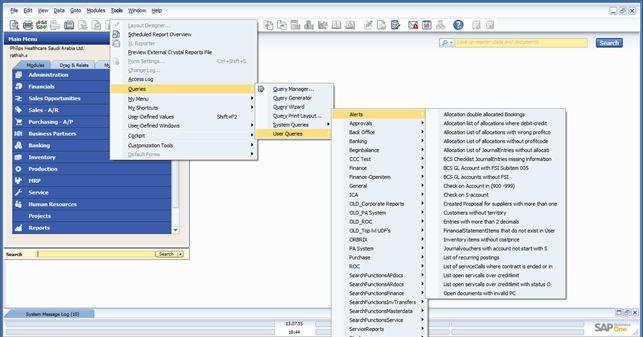
Chart of Accounts

Crystal Report Viewer – This tool is used in generating crystal reports in SAP.

User Query in SAP
Using this feature, we can customize our report by creating our own user query.

Screen Painter
To design a new form with input values, we need a tool named “Screen Painter”. With this screen painter, after designing the screen, we need to save it as a .srf extension file, and we can get xml code from it and now the presentation logic is ready.

Presentation Logic-xml code for the above screen design

Back end
For SAP B1, we can use “Sql Server 2008 R2”. Some of the SAP tables as follows:
| Screen | Table Name | Child Table Name |
| Sales Quotation | oqut | qut1 |
| Sales Order | ordr | rdr1 |
| Delivery | odln | dln1 |
| Sales Return | ortn | rtn1 |
| A/R Invoice | oinv | inv1 |
| A/p Invoice | opch | pch1 |
| Purchase Order | opor | por1 |
| Good Receipt PO | opdn | pdn1 |
| Purchase Return | oprn | prn1 |
| Bill of Material | oitt | itt1 |
| Production Order | owor | wor1 |
| Issue of Production | oige | ige1 |
| Receipt of Production | oign | ign1 |
| General Ledger | oact | act1 |
| Stock Transfer | owtr | wtr1 |
| Warehouse | owhs | whs1 |
| Item Master Data | oitm | itm1 |
We can create our own tables with necessary fields in Table Creation.vb
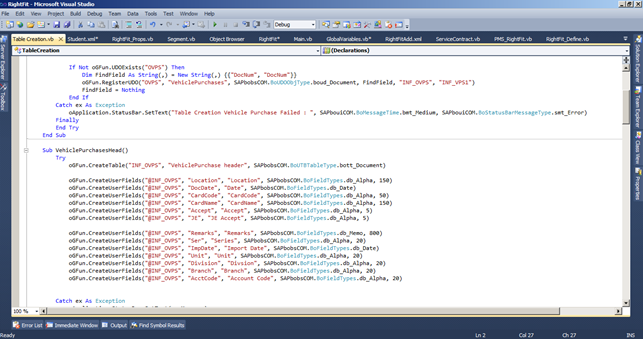
Front End
We are using VB.NET for SAP B1 development. We follow a structured way of developing and maintaining code in the system.
For example,
A) Global Variables.vb
B) Global Functions.vb
C) Menu.vb
D) Table Creation.vb
E) Event Hanlder.vb
The above files were written in vb.net for different purposes.
If we dig deeper in to Event Handler.vb, it has:
a) Menu Event
b) Item Event
c) Form Data Event
d) Right Click Event
e) Status Bar Event
Here, again Form Data Event has Form Data Add, Update and Load features.
Item Event has Choose From List Event, Lost Focus Event, Matrix Link Press Event, and etc.
Global Variables.vb
The name itself indicates that the variables are commonly used throughout the system and are stored in a separate file.

Global Functions.vb
All the functions repeatedly used are put in this file and called using necessary parameters.
AddXML, Menu Creation, Data Base Creation, LoadDocumentDate and Load ComboBox are some samples which can be accessed from any of the class in an application.

I hope this article helped you understand the overview and key features of SAP.
Reference Link: https://support.sap.com/documentation.html



